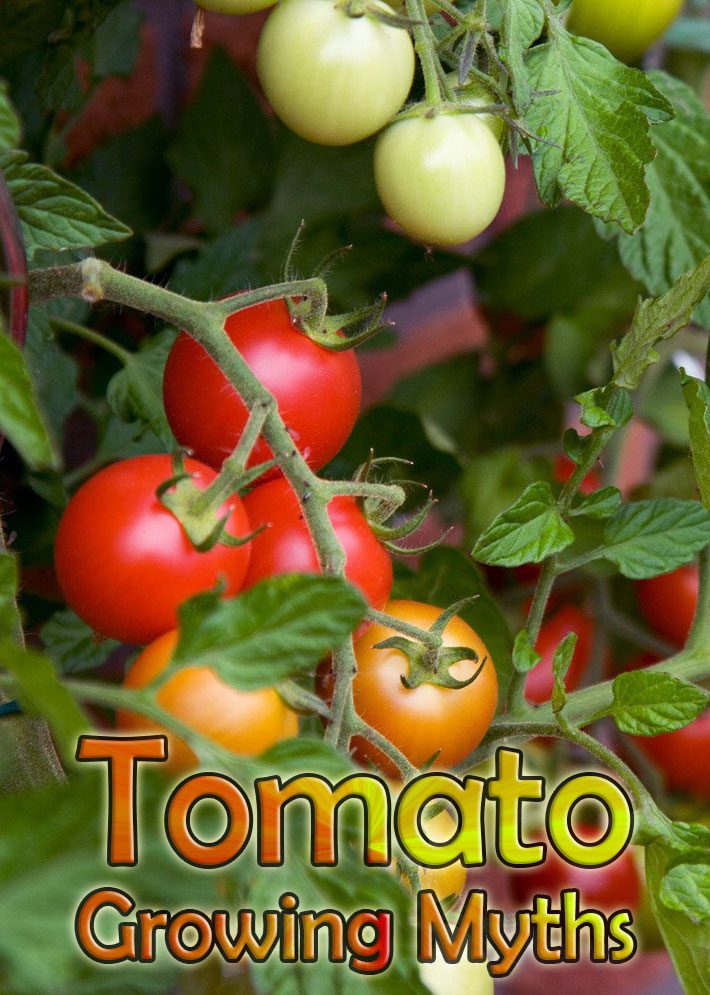
Tomatoes are by far the most popular vegetable to grow in the United States. There is nothing like a tomato ripe from the vine! Many people started gardening by way of the tomato. They were the very first vegetable we grew. Many gardeners have the techniques they swear by to get the biggest and best tomatoes. Here are some tomato growing myths that are not necessarily true.
Tomato Growing Myths (and Some Truths)
Tomatoes love as much sun as possible!
This depends on where you live. In very hot climates, 6-8 hours is plenty. Your tomatoes can actually scald in intense sun and heat. For hot climates, plant your tomatoes in a north to south row so each side gets some shade each day.
You should prune your tomatoes for the best harvests.
This again depends on your climate. If you live in a hot climate with intense sun and heat, you want to keep the leaves to help protect the tomatoes from sun scald. If you live in a damp area, you want to prune the tomato plant to allow good air circulation and sunlight.
Tomatoes love fertilizer!
Actually, you only want to fertilize when you plant and again when the plant flowers. Too much nitrogen encourages leaf growth. Some that really sock the fertilizer to the plant end up with a giant green plant with no tomatoes. To help with flowering, fruiting and blossom end rot, be sure to get a fertilizer with plenty of phosphorous and calcium.
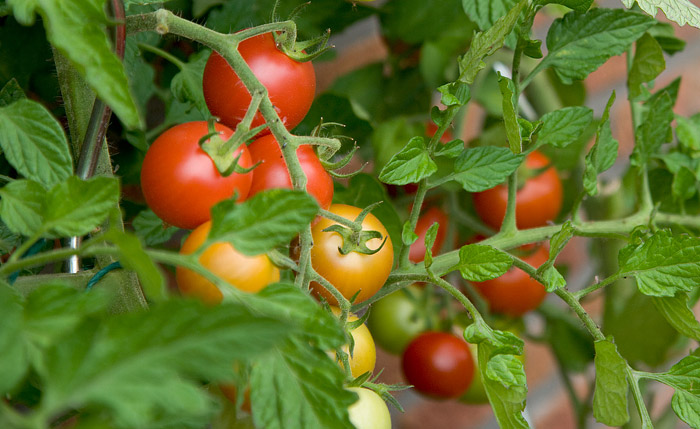
Tomatoes can’t be grown in pots.
Tomatoes can be grown in pots, but not the big tomato plants or you have to grow them in a huge container like a whiskey barrel. Look for dwarf, pot, or patio types. You will need to put in a large pot and be prepared to water often.
Tomatoes need to be watered a lot.
Actually, if you water your tomatoes a lot, you can end up with fungal diseases and mushy fruit. The trick with tomatoes is to keep their moisture even. Letting the ground crack and then drowning the plant will result in cracked fruit. In the hot times of the summer, you will likely need to water at least weekly. Be sure to not water the leaves, but the root.
When you see leaves dropping, something is wrong.
This is a natural progression of the plant. As fruits begin to form, there is less energy for the leaves and some leaves will turn yellow and die.
A spindly tomato transplant is an unhealthy one.
Actually the hairs on the stems can easily be transformed into roots. I take my transplants and remove the bottom leaves and plant on its side with only the top 4 leaves above ground. This gives the plant a good root system.
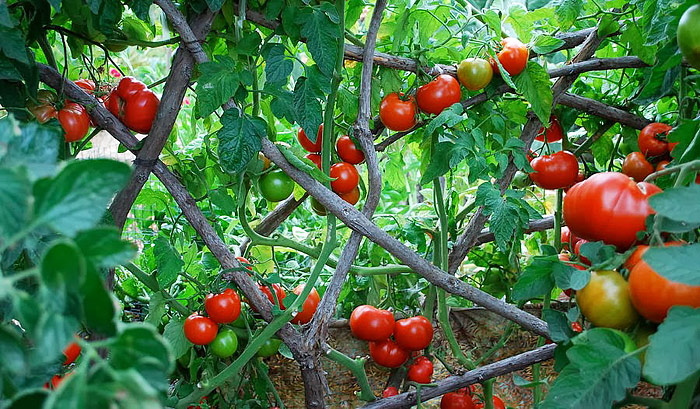
You can only transplant in early summer.
Actually, if your tomato plants are starting to fade in mid summer, you can put out new transplants that will give you fruit until the first frost.
When you make sauce, the skins and seeds have to be removed.
I put whole tomatoes into the food processor. Some say that the skin and seeds can impart a bitter flavor. With the many types of tomatoes I have raised, this has never been a problem for me.
Only paste tomatoes can be used for sauce.
I use all my tomatoes for sauce. The best for sauce for me are the most prolific tomato plants. These have been Yellow Pear and Juliet for us. I would ask your neighbors which ones give the most fruit if you are looking to put up by freezing or canning.
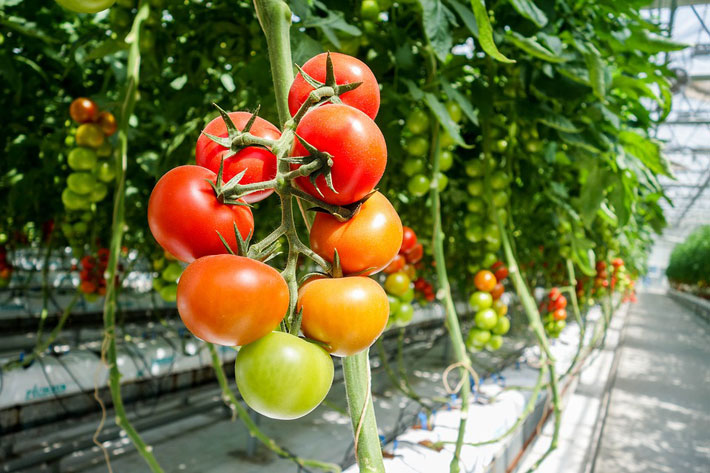
The last tip: Tomatoes are susceptible to fungal diseases.
Do try to not plant your tomatoes in the same spot for four years. Fungal diseases stay in the soil and take a while to die out. The same goes for a pot. A way around it for a pot is to use new soil and disinfect the pot each year.

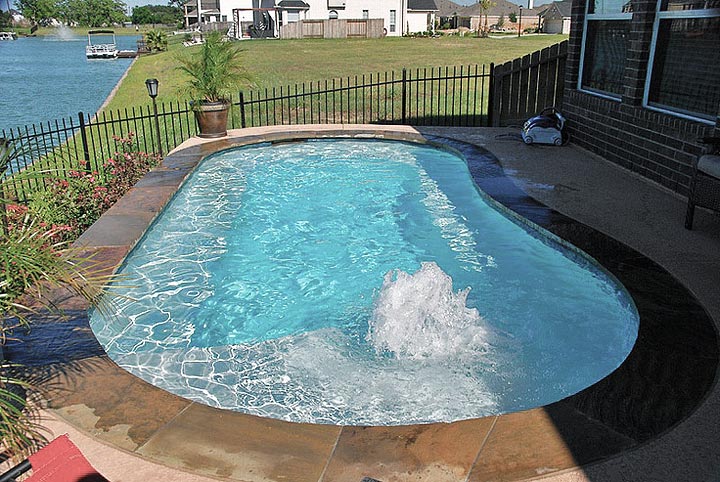
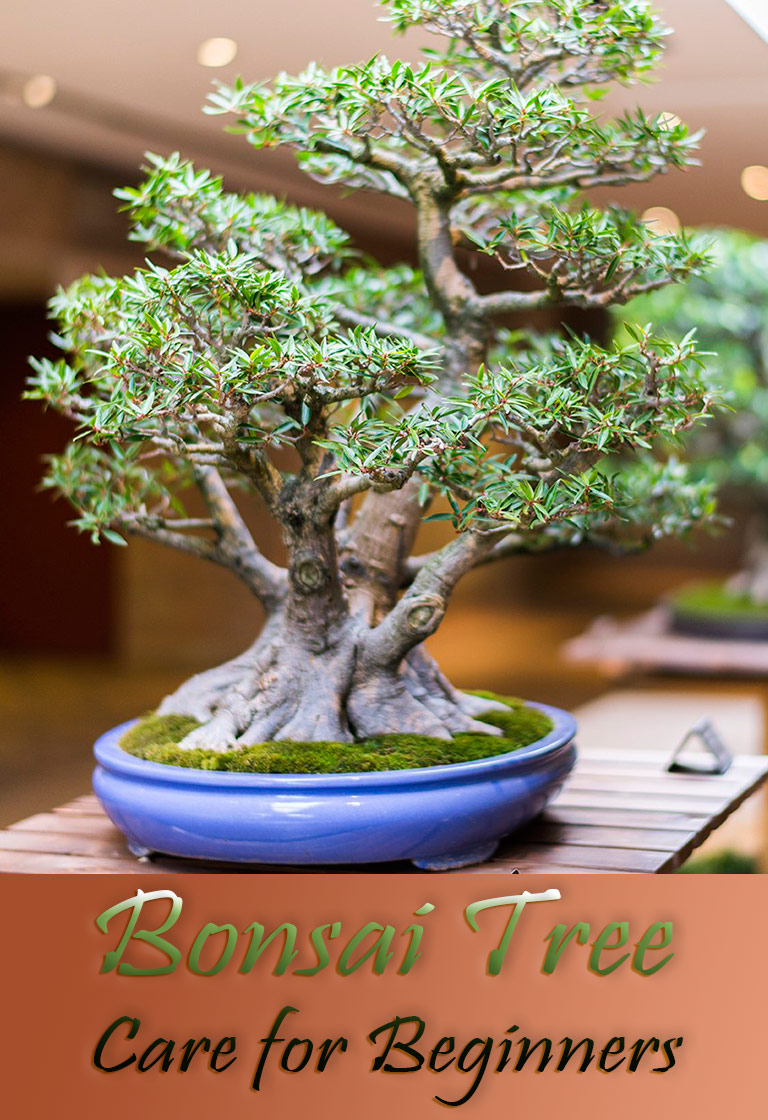

Leave a Reply